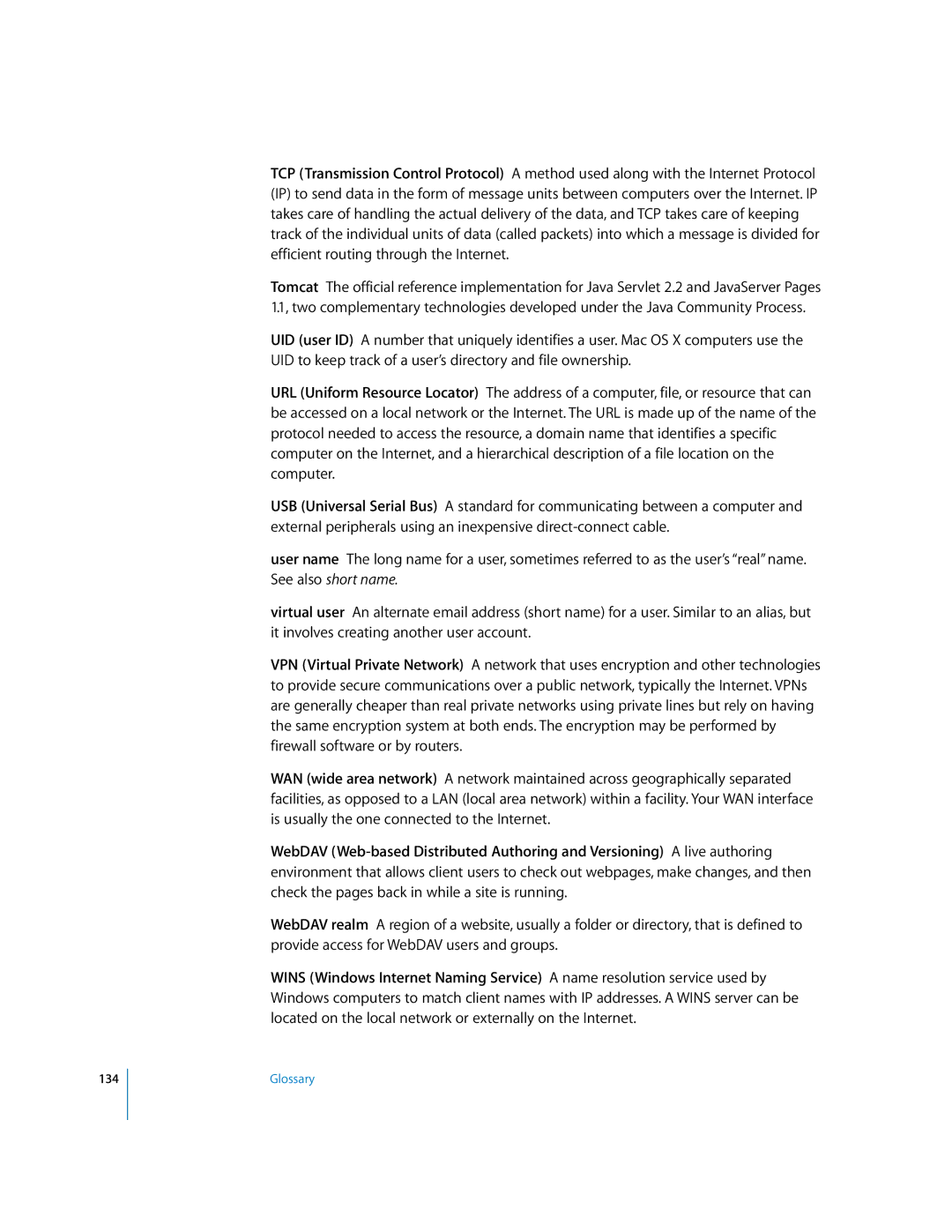
134
TCP (Transmission Control Protocol) A method used along with the Internet Protocol (IP) to send data in the form of message units between computers over the Internet. IP takes care of handling the actual delivery of the data, and TCP takes care of keeping track of the individual units of data (called packets) into which a message is divided for efficient routing through the Internet.
Tomcat The official reference implementation for Java Servlet 2.2 and JavaServer Pages 1.1, two complementary technologies developed under the Java Community Process.
UID (user ID) A number that uniquely identifies a user. Mac OS X computers use the UID to keep track of a user’s directory and file ownership.
URL (Uniform Resource Locator) The address of a computer, file, or resource that can be accessed on a local network or the Internet. The URL is made up of the name of the protocol needed to access the resource, a domain name that identifies a specific computer on the Internet, and a hierarchical description of a file location on the computer.
USB (Universal Serial Bus) A standard for communicating between a computer and external peripherals using an inexpensive
user name The long name for a user, sometimes referred to as the user’s “real” name. See also short name.
virtual user An alternate email address (short name) for a user. Similar to an alias, but it involves creating another user account.
VPN (Virtual Private Network) A network that uses encryption and other technologies to provide secure communications over a public network, typically the Internet. VPNs are generally cheaper than real private networks using private lines but rely on having the same encryption system at both ends. The encryption may be performed by firewall software or by routers.
WAN (wide area network) A network maintained across geographically separated facilities, as opposed to a LAN (local area network) within a facility. Your WAN interface is usually the one connected to the Internet.
WebDAV
WebDAV realm A region of a website, usually a folder or directory, that is defined to provide access for WebDAV users and groups.
WINS (Windows Internet Naming Service) A name resolution service used by Windows computers to match client names with IP addresses. A WINS server can be located on the local network or externally on the Internet.
Glossary
